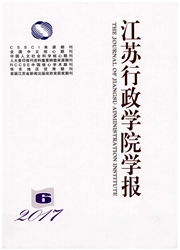

 中文摘要:
中文摘要:
影响和控制代议机构是现代政党政治运作的共同特点。在实行宪政分权的竞争性政党政治背景下,最常见的制度化控制方法是议会党团制度。中国实行的是议行合一的党国体制,其权力结构的特征是以中国共产党为核心的同心圆结构。在这样一种同心圆式的权力结构中,执政党对人大的领导控制在早期主要采用了“组织渗透+人事控制”的方法。改革开放后,伴随人大自主性、独立性的增强,执政党逐渐形成了多元化的控制策略。这些控制方法大体上可以分为制度化的方法和非制度化的方法两大类。前者除延续“组织渗透”和“人事控制”之外,还包括党委书记兼任人大常委会主任制度、人大会议的科层化、信息交流控制和信息过滤机制、代表议案的过滤筛选机制;后者包括模拟投票、“组织安排陪选”等竞选策略、威权体制下基于恐惧的服从等。
 英文摘要:
英文摘要:
Influence of and control over representative bodies is a common feature of the operation of modern parties. In the context of competitive party politics where constitutional and government powers are separated, the most common method of institutional control is the parliamentary caucus system. China adopts the party-state system where the congress and admin- istration are integrated into one, so the feature of its power structure was the concentric structure with the Communist Party of China as the core. In such a concentric power structure, at the initial stage, the leadership of and control by the ruling party over the people's congress took the method of “organizational infiltration + Personnel control”. After China adopted the “Re- form and Open-up” policy, with the growth of autonomy and independence of NPC, the riding party had gradually formed the diversified control strategies. These controlling methods can be generally divided into two categories: institutionalized methods and non-institutionalized method. The former method continues the practice of “organizational infiltration” and “personnel control”, and involves the following mechanisms : allowing CPC Secretary to serve as the Chair of the Standing Committee of NPC, laying hierarchies for NPC sessions, mechanism for control over information exchange and information filtering, filtering and sifting mechanism for delegates' proposals. The latter includes mock voting, "organizing and arranging escort election" and other competitive strategies, as well as obedience based on fear under the authoritarian regime.
 同期刊论文项目
同期刊论文项目
 同项目期刊论文
同项目期刊论文
 期刊信息
期刊信息
